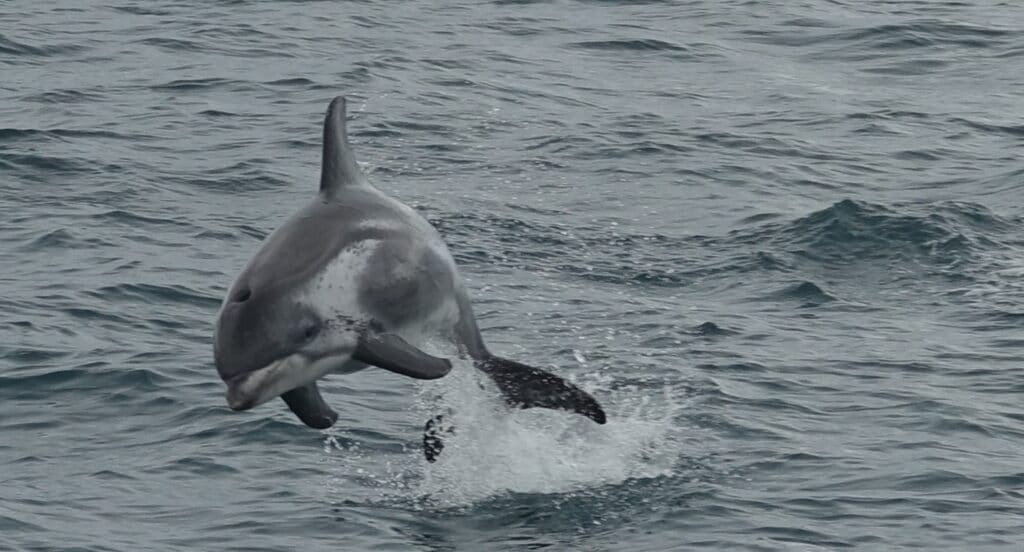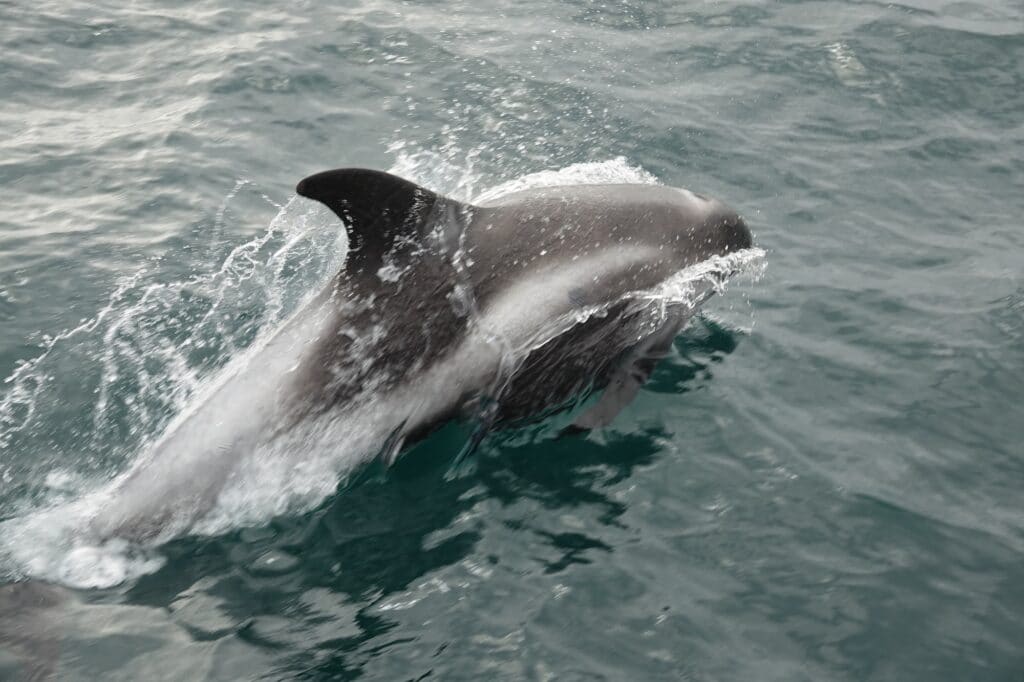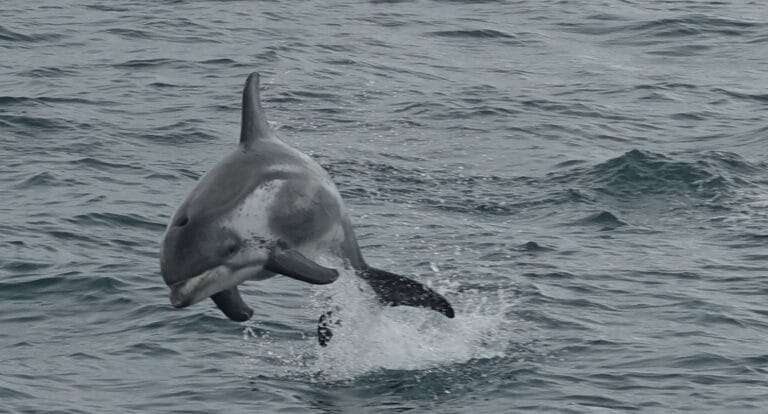White-beaked dolphins – (Lagenorhynchus albirostris)
White-beaked dolphins, scientifically known as Lagenorhynchus albirostris, are truly captivating Icelandic marine mammals that grace the waters of Faxa Floi in Iceland. These delightful creatures are the most common dolphin species that we encounter in this region, and they often approach our boats to bow-ride, delighting all who have the privilege of witnessing their acrobatic displays.

Size and Growth:
These charming white-beaked dolphins typically measure between 2 to 3 meters when fully grown, but at birth, they are merely a little over a meter long. The journey from a 40kg calf to a 350kg adult is a remarkable one that requires dedicated care and energy. White-beaked dolphin calves stay close to their mothers for several years, with females reaching maturity at around 5 years old and males at 7. During this crucial time, they rely on their mother’s rich milk for sustenance, allowing them to build up an insulating layer of blubber, vital for surviving the harsh Icelandic winters. However, it’s important to note that the first year of life can be perilous, with a relatively high mortality rate.
The Distinctive Appearance of White-beaked dolphins:
White-beaked dolphins are easily recognizable by their short beak, which often sports a white hue, giving them their common and Latin names. As they age, this beak can darken to a more subtle gray color. Their overall body is predominantly gray with lighter gray patches, including a saddle-like marking behind the dorsal fin, reminiscent of orcas. Just like many marine creatures, their underside is notably lighter, almost appearing white in contrast to their dorsal coloring.
Diet and Hunting Behavior:
These dolphins, technically categorized as toothed whales, primarily feast on fish. It’s not uncommon to spot them surfacing with freshly caught fish gripped firmly in their beaks. An intriguing behavior to witness is their role in teaching their offspring to hunt. They often capture fish and employ a unique strategy by temporarily maiming them, thereby slowing the fish down, allowing their young ones to practice their hunting skills.
Social Creatures:
White-beaked dolphins are renowned for their sociable nature. They reside in pods, and while you’ll typically encounter them in groups of 4 to 15 individuals, larger congregations have been documented. Within these pods, they communicate using a combination of whistles and clicks. Their use of echolocation is also fascinating as it aids them in exploring their surroundings and locating fish for hunting.
Did you know?
White-beaked dolphins are not only agile swimmers but also highly skilled divers. They can plunge to depths of up to 300 meters (almost 1,000 feet) in search of their favorite prey, which includes various species of fish. This remarkable diving ability enables them to access a diverse range of underwater habitats and food sources. While they are often seen leaping gracefully out of the water, these dolphins are equally at home beneath the waves, showcasing their adaptability and mastery of the ocean depths in the stunning Icelandic marine environment.

Threats and Conservation:
As with all marine mammals their greatest threat comes from humans. Ocean noise pollution limits their communication, orientation and feeding generally, and excessive noise, such as from ships doing military testing or searching for oil reserves can deafen them permanently or cause them to panic and become stranded. Plastic pollution, hunting and entanglement in fishing gear are also threats for this species.
In conclusion, white-beaked dolphins are remarkable Icelandic marine mammals that inhabit the Faxa Floi waters, and witnessing their acrobatic displays and social interactions is a true delight. However, it’s our responsibility to ensure their continued existence by taking steps to mitigate the threats they face and protect their precious marine environment. Learn more about these incredible creatures by checking out our comprehensive guide on spotting Icelandic marine mammals in their natural habitat.

